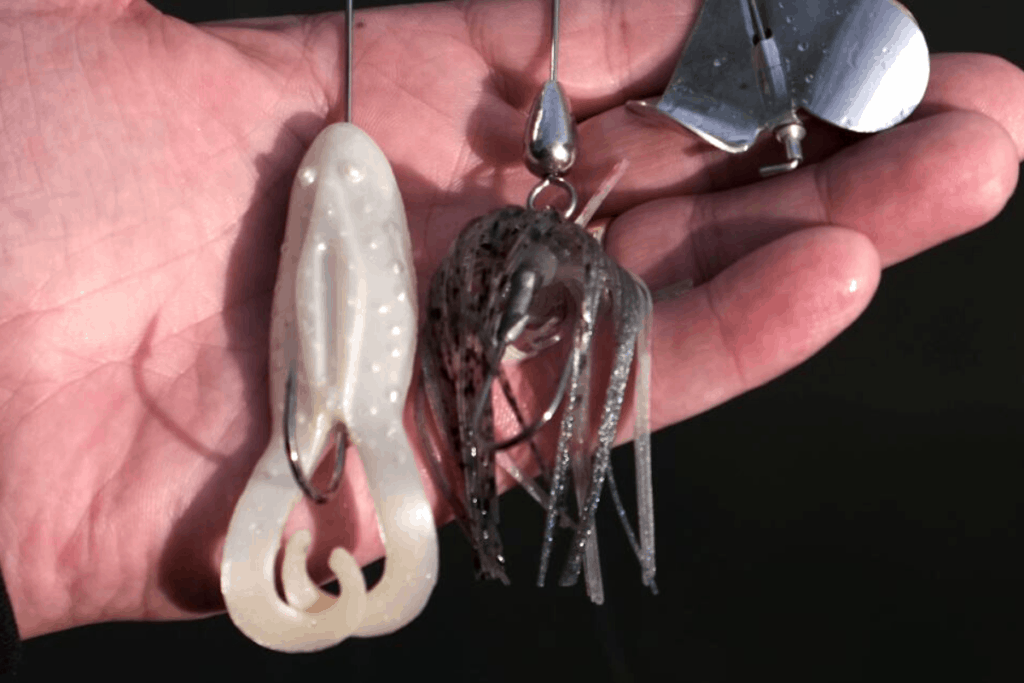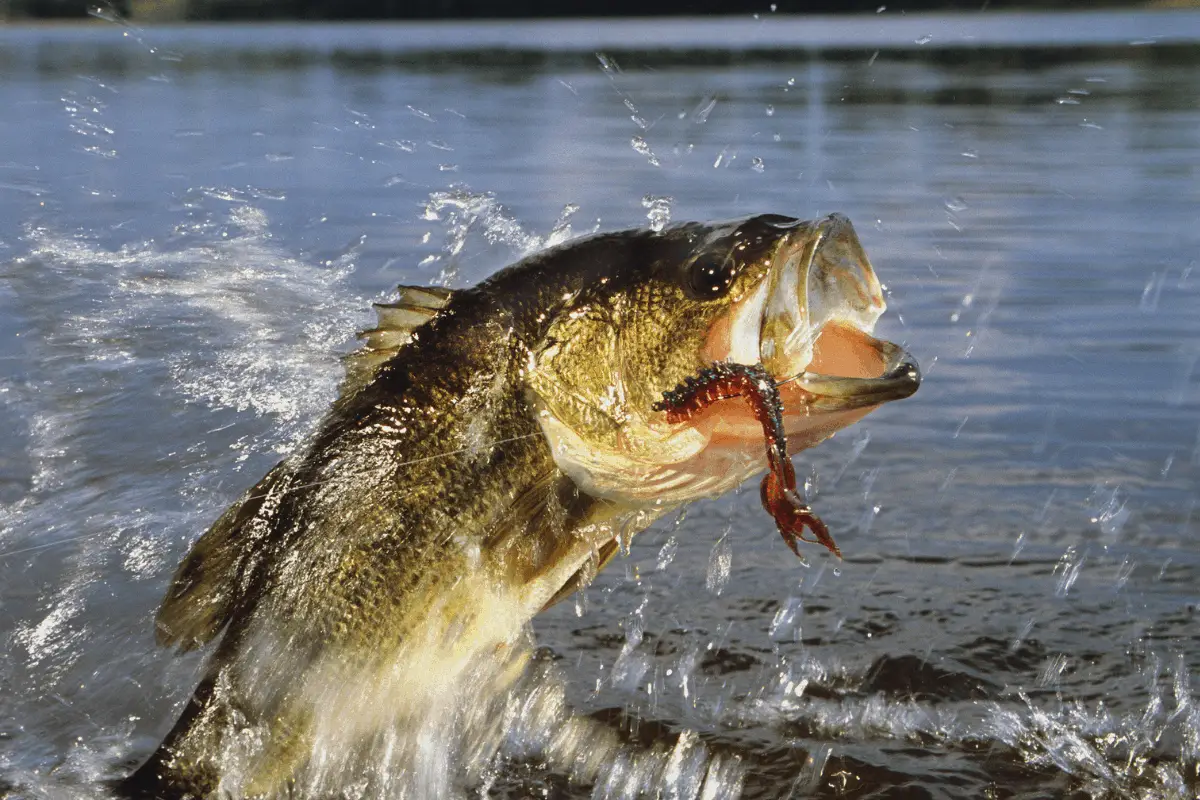Fishing from the back of the boat can be challenging. Don’t despair! These tactics and tips will help you dominate from the back deck.
To excel at fishing behind the angler in the front of the boat, keep these key tactics in mind.
- Drag a Lure Behind the Boat
- Fish the Other Shoreline if Possible
- Target Isolated Cover That is Overlooked
- Use a Different Lure Than the Angler in Front
- Spool Up The Lightest Line Possible
- Target a Different Depth
This article will break down each of these key factors to help you find success from the rear of the boat.
Life As a Co-Angler
Whether you are fishing from the back deck during a tournament or just on a Sunday afternoon with your buddy in the front, the challenges that co-anglers face are real. Depending on how the operator of the boat positions the rig, casting to forward-facing targets can be impossible.
I’ve fished many tournaments from the pro side and watched amazingly talented co-anglers behind me win their side of the tournament. Not once, not twice, but three times in three consecutive tournaments.
Every co-angler wanted to draw me as a partner. I was finding fish and they were taking advantage of it. It was interesting to watch the tactics they used to make life from the back deck enjoyable.
1. Drag a Lure
This might just be the most effective strategy I have ever seen.
I truly believe that this method and approach was born out of frustration. I can picture a defeated angler, sitting on the back pedestal seat, upset, and letting his or her lure just drag behind the boat. The next instant they are reeling in a quality bass that puts them in high spirits.
Dragging a lure is best done at a 45° angle off the back deck. This position helps to make positive and efficient hooksets.
The lure I would choose first is a Ned Rig. This bait does wonders when pulled and bounced along the bottom. To make the most of dragging, adjust the weight based on the speed that the angler in front is moving along the shore. Bottom contact is key, yet the weight does not want to be so heavy it gets hung often.
Adjust up-and-down in size until constant, bouncing contact is achieved.
This method also works best with lake and river beds that are clean and rocky. If the water you are fishing is thick with vegetation, other methods will work better. It is also critical to not overwork the lure. Let the moving boat impart the action.
I have seen co-anglers outfish the person in the front of the boat by a wide margin using this method. It works. Stick with it and have confidence.

2. Fish the Other Shoreline
There are many times when the boat operator moves into water that is narrow.
It may be the back of a pocket, a cove, channel, or even a dredged out boat lane. Whenever it is possible, fish the other side and attack fresh water.
When anglers operate the boat from the front deck, they are always looking ahead and seeing what targets are coming up. Co-anglers can do the same thing but focus on the other side.
Casting to the opposite bank is not always possible, but when it is, the rewards can be great.
3. Find Isolated Targets
The really “fishy” looking stuff is easy to find.
It is also the cover that most anglers in the front of the boat will drop a lure around – for sure.
As a co-angler, learn to find those unassuming looking pieces of cover that the other angler likely will pass over. From spending hours filming bass underwater, I can honestly tell you that I have seen quality fish holding on the tiniest cover in the area.
It may be a single branch the diameter of a pencil. It could be a fist-sized rock in an area that is all pea gravel. It might even be a clump of weeds a foot in width off away from a larger weedbed.
Isolated targets can hold amazing numbers of bass. I’ve seen it. Many times.
Co-anglers that take this mindset may not get the number of bites that an angler on the front deck gets hitting all the best looking stuff, but the overall size of the bass caught can and likely will be quite impressive.

4. Use a Different Lure
This seems like an obvious tip, but humans are interesting creatures. We never want to be left out.
If the angler in front says they have been catching bass on a black-blue jig, our instinct is to tie on the same lure. Now, if the guy or gal on the front deck is ripping quality bass every few casts, by all means, tie on the same bait.
Until that moment, make sure you are offering the bass something different.
Traditional follow-up lures are excellent choices.
We know that a wacky rigged stickbait is a must when topwater fishing. Missed strikes are easily caught with a slow-sinking “senko” style bait.
If the angler in front is throwing a topwater, start with a wacky rig and “follow” them.
Another easy strategy to employ is to use a different sized lure, or weight. Changing the rate-of-fall can be all it takes to coax passive bass into biting. In clear water, I like to use a heavier weight and get the bass to react as the lure drops by them. In stained or dirty water, I prefer a slower rate of fall so the bass can see it longer.
The options to vary your presentation from the angler in front are endless. Keep mixing it up to present the fish with something fresh.
5. Use the Lightest Line Possible
This simple change can easily make the difference between a 5-fish day and a 15-fish outing.
The tougher the conditions – the more effective this is.
I prefer to have braided line on both my spinning and casting reels. It is then very fast and easy to switch the leader and try different sizes of line. It saves time and avoids respooling the entire reel every time you hit the water.
I have tried many different knots over the years and I prefer the Red Phillips knot for my braid-to-leader setup.
This knot is super easy to tie, you don’t need fifty appendages like some other knots to hold line, twist, etc. It is very strong and it glides through the eyes of the rod nicely.
Here is a video on the Red Phillips knot.
6. Focus on a Different Depth
This tip can end up with co-anglers catching giant bass.
It is easy to focus on the shoreline in front of us if the angler in the bow of the boat is flipping and pitching cover.
I have seen many, many, times where the co-angler targets water out the other side of the boat and ends up catching huge fish. This is especially true during the spring and fall when bass are staging offshore. The larger females will hang in slightly deeper water much longer than their smaller male counterparts.
This strategy works with just about any lure you can imagine – even topwaters. As the summer moves into fall bass will follow baitfish into open water. Casting topwaters into what looks like nothing can result in some great action.
The change in depth, or the depth the co-angler focuses on, does not need to be drastically different than what the angler in front is doing.
Be on the lookout for that first major depth variation. Where does the light penetration stop? Where does the weedline stop?
If the angler running the boat is moving right along, change the weight you are using to get to the bottom quicker. A Power Shot rig is a great option here.
Final Thoughts
Yes, being a co-angler is tough.
That challenge can be overcome when focusing on these six tips. Not only is there the possibility you will catch a better quality fish, you may even have the bass enthusiast in the front of the boat turn and ask what you are doing.
Tight lines. Be safe and make sure to encourage someone today. You never know how you might just change their life forever.
Isaiah 6:8

